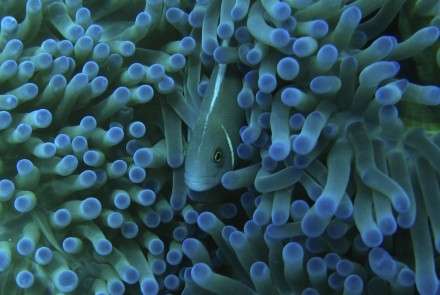Credit: Peter Cowman
Nemo may have found his way home, but when it comes to evolution, he and his friends encounter a whole different set of challenges.
The challenges include hard and soft barriers, which affect the way coral reef fishes have evolved, according to Dr Peter Cowman from the Research School of Biology.
"Hard barriers, like a land bridge that physically splits a population, and soft barriers, like vast distances or strong water currents, play important roles in the evolution of coral reef taxa," Dr Cowman says.
Dr Cowman studied the geographic ranges of three different families of coral reef fish (wrasses, butterflyfishes and damselfishes) across five separate regions. Using DNA analyses, he was looking to pinpoint particular moments in the evolutionary paths of the fish.
"A 'vicariance event' is the point in time when a barrier has resulted in the formation of new species," explains Dr Cowman.
"We expected that vicariance events associated with hard barriers would be quite clear in the molecular record and reflect the age of the barrier itself, and soft barriers would have a wider range of associated ages since the barriers themselves seem quite porous.
"Contrary to this expectation, hard barriers show a scattered pattern of vicariance, not just reflecting the age of the final barrier closing but also the long history of its formation. Soft barriers, however, take effect over relatively narrow time periods."
"Once the soft barriers dissipate, the newly formed species are able to migrate back and forward and add to the species richness of both areas. Generally, hard barriers do not allow for this."
This research highlights the importance of coral reef habitat amongst adjacent regions in promoting biodiversity in fish over an evolutionary time-scale.
"The evolutionary connections between coral reef systems in neighbouring oceans that has been important for the diversity of fish species we see on coral reefs today will continue to be important in the future," says Dr Cowman.
Provided by Australian National University




















